It’s fair to say that if there wasn’t a rainstorm and a slanted sill (more on that later), we wouldn’t have found these invaluable artifacts. Senior Preservationist Jeff Larry explains:
Every once in a while we uncover some interesting items typically associated with the many different uses of the Cottage by the Soldiers’ Home.
These two items were found the first week in August beneath a window stool while preparing for some exterior sill repairs. From what I could safely see, the tightly folded note paper contains a list of names and what appears to be food options. The second image is a pair of buttons from the Waterbury Button Company which was founded in 1812 and is still in business today. According to ‘The Record of American Uniform and Historical Buttons’ by Alphaeus Albert, the buttons came from an enlisted man’s uniform sometime between 1854-1875.
Both items, along with bits of newspaper, cloth fragments, five shaving blades, eight wooden match sticks, broken mirror glass and ceramic bowl pieces and one pipe stem will be catalogued and safely stored for future study.
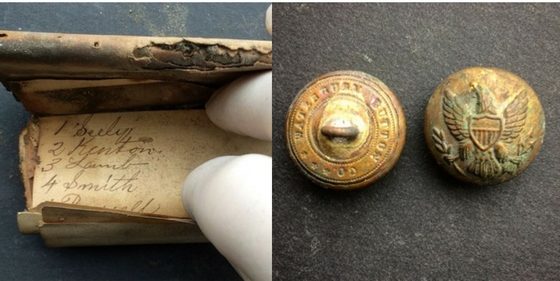
This discovery happened due to a leak in the Cottage, stemming from the window sill.
Because of their constant exposure to the elements, window sills receive a lot of wear and tear. As part of our cyclical maintenance program, the surface of sills are visually inspected twice a year for failing paint, checks, and deterioration. However, a visual inspection alone cannot reveal long-term internal damage until that damage reaches a tipping point and manifests itself in the form of a water leak. Such was the case in late July when water leaked through the ceiling of the Cottage library after a series of rainstorms. No permanent damage was done and the source of the leak was traced to the window sill of the room above the library.
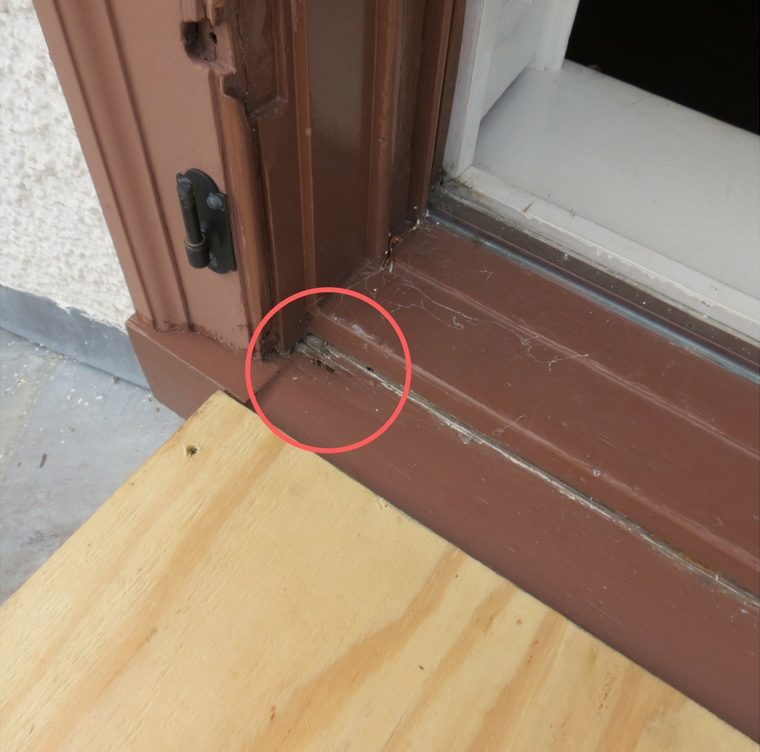
A probe of the damage revealed a much larger problem and the decision was made to remove the entire sill.
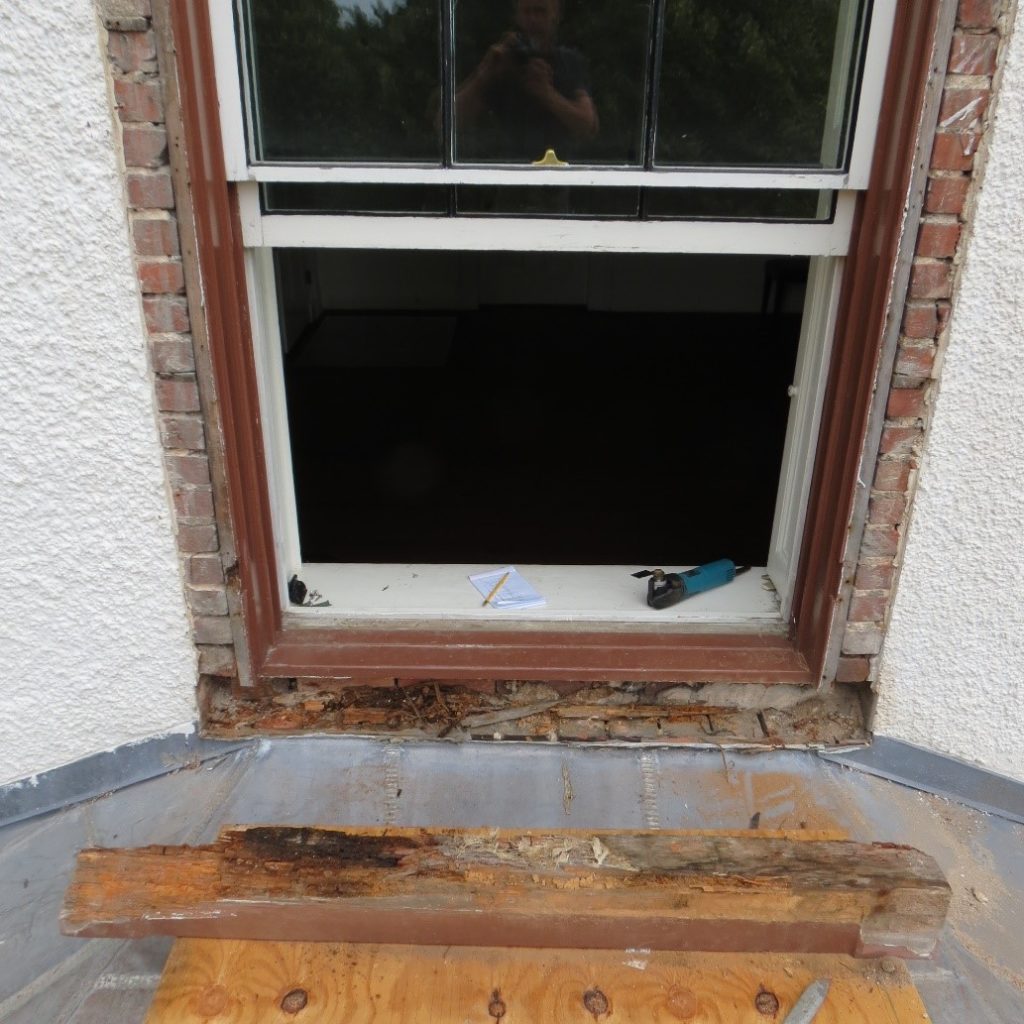
Before beginning repairs to the sill I wanted to determine what caused the damage. And this is where the story gets interesting!
By all appearances the sill was original and there was no evidence to suggest that the sill had ever been removed or significantly repaired. The damage to the sill (and trim) was extensive and must have occurred over a long period of time. In fact, moisture probably began collecting behind the sill from the day it was installed! Further investigation revealed that when the sill was installed in 1848 the carpenter hand planed (leveled/flattened) the top of the sill so that the remaining components of the window frame could fit into place. In doing so he changed the pitch (slope/angle) of the sill. Instead of shedding water away from the building, water now flowed behind the trim and sill. Why did he do this? The sill rests on the outer wythe (A wythe is a continuous vertical section of masonry one unit in thickness) of bricks. One of the bricks was laid 3/8” higher than the adjacent bricks. Rather than notch the underside of the sill to account for the higher brick, the carpenter planed the top of the sill!
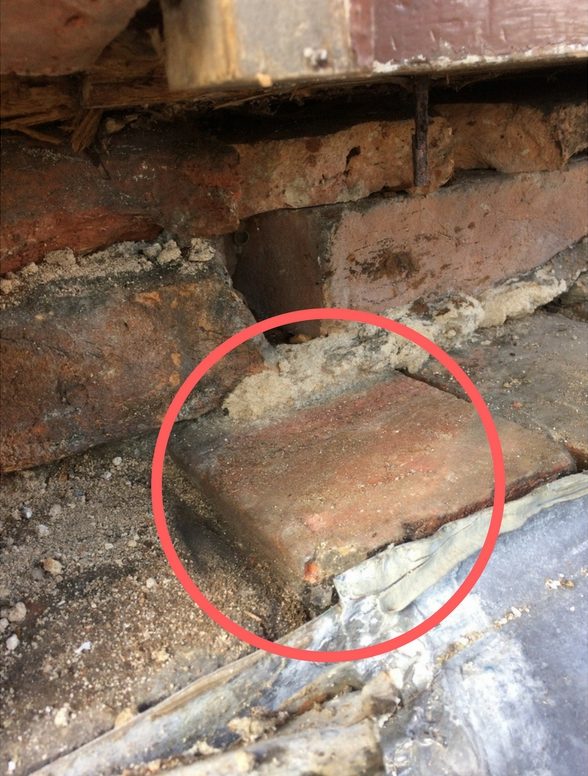
There was enough original material left in the sill to warrant a repair rather than total replacement.
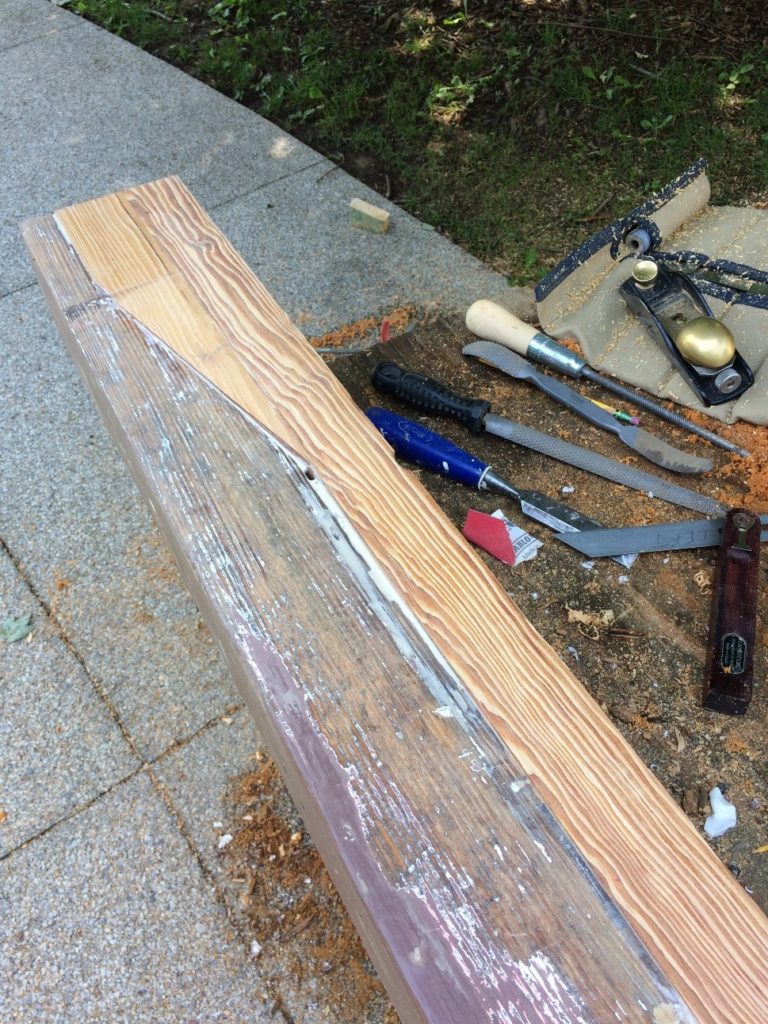
An epoxy filler was then feathered in over the low area to create the correct slope.
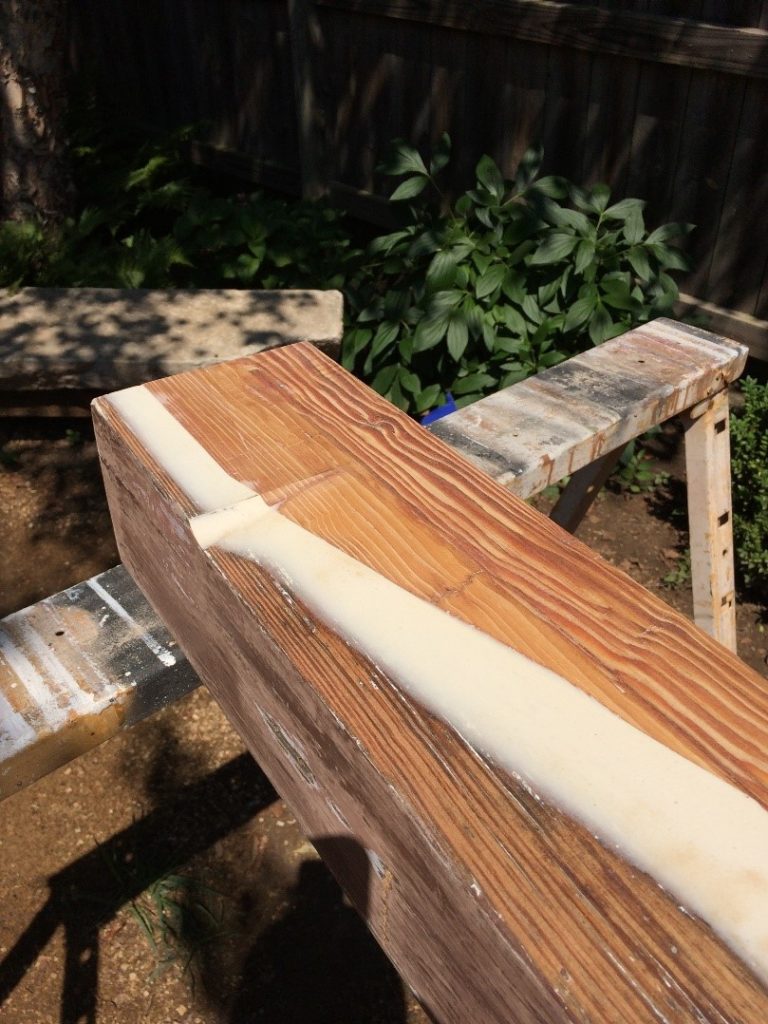
The new and improved sill and trim work were installed last week and the scaffolding came down last week. The buttons and paper are awaiting a conservator.
